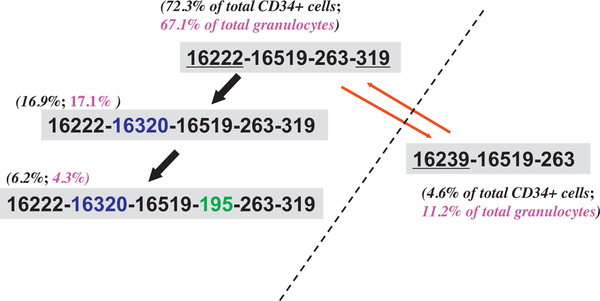Fig. 7.
Diverse mtDNA haplotypes identified in a relapsed patient with acute myeloid leukemia. This patient (UPN22) received a platelet transfusion proximate to blood collection, and contamination by donor blood cells might account for the presence of haplotype 16239–16519-263, which differed from the main haplotype 16222–16519-263–319 by three variants that were underlined. The percentage of cells sharing each haplotype was marked in parentheses besides the haplotype. The step-wise occurrence of mutations 16320 and 195 based on haplotype 16222–16519-263–319 was marked by arrows. The original data were from Yao et al. [21].

